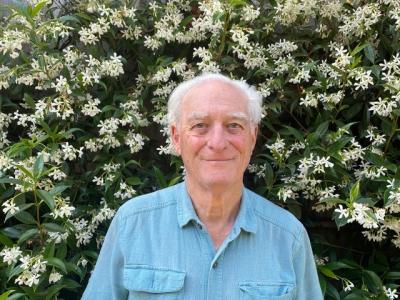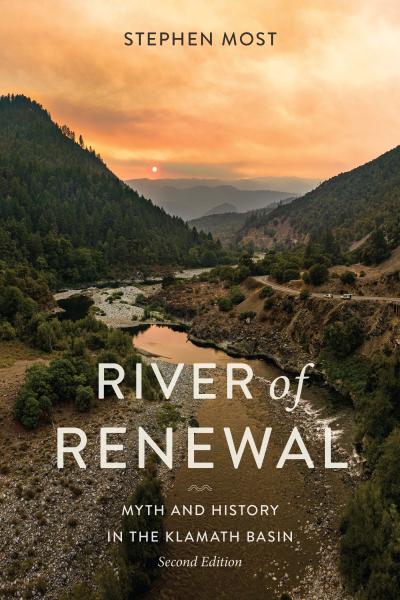
Author, playwright, and filmmaker Stephen Most revisits River of Renewal: Myth and History in the Klamath Basin in an updated second edition this fall. Starting with the first human habitation of the region to the restoration of the watershed and its wildlife after the removal of the four hydroelectric dams, the book shares the region’s intriguing history as well as the cultural and environmental impacts to its land and people.
What inspired you to write the first edition of River of Renewal, which was published in 2006? And what caused you to revisit the topic in this new edition?
I was making the documentary film River of Renewal when I realized that writing a book would help me think about and contextualize what I knew and was learning about the Klamath Basin. During the eight years of filmmaking, it appeared that despite the bitter conflicts between stakeholders in the region, a consensus was emerging on removing the hydroelectric dams on the Klamath River, restoring the watershed, and bringing wild salmon back to the headwaters. When it became clear years later that this large-scale, long-sought restoration would actually occur, I investigated how it came about. The purpose of the new edition is to tell that story.
The introduction begins with quote from John Muir, “All my blood turned to wine, and I have not been weary since,” as to seeing Mount Shasta for the first time. Where in the American West evokes a sense of amazement for you?
Making a film and writing a book about the Klamath Basin gave me many opportunities to see Mount Shasta. It never ceases to amaze me and to awaken my sense of the sacred.
Why should readers pick up River of Renewal?
This story of a geographic region defined by mountains, water, and wildlife and harboring once abundant wild salmon species appeals especially to readers interested in the environment, the Pacific Northwest, and American Indians. Even so, it can inspire others, especially those who feel overwhelmed by the troubles of our times. For in this place that has witnessed, ever since the Gold Rush, genocide, war, and bitter conflicts over resources, a number of farmers, ranchers, and tribal members, along with other regional stakeholders, forged a consensus that brought about the largest dam removal and watershed restoration project in US history.
How will various stakeholders use the environmental lessons that have been learned from the Klamath Basin?
The complementarity of traditional ecological knowledge with Western science is revealed through application of the Klamath River tribes' world renewal ethos to the task of watershed restoration. Another kind of lesson comes from the various kinds of conflict resolution and consensus building discussions that enabled stakeholders of different cultures and with contending interests to reach agreement on restoring their common ground. In so doing, they rejected what Aldo Leopold called "the fallacious notion that the wild community is one thing, the human community another." Stakeholders working toward restoration of regions distant and different from the Klamath Basin can benefit from the practical wisdom of the people of the land; from taking pains to develop mutual understanding with neighboring strangers; and by shifting from a low-context focus on the interests of one's community to a high-context recognition of the natural community that encompasses everyone.
Is there another project on the horizon that you are excited about? When will it be shared?
The second edition of my book Stories Make the World, Reflections on Storytelling and the Art of the Documentary will be published in 2025 by Berghahn Books. It has chapters about the making of my Klamath Basin film and about Wilder than Wild: Fire, Forests, and the Future. When writing and producing that documentary, I researched the revival of cultural fire by the Klamath River tribes. How that happened is one of the stories I tell in the new edition of River of Renewal.
River of Renewal: Myth and History in the Klamath Basin is available to order and will be released in October 2024.
Related Titles

River of Renewal
River of Renewal tells the remarkable story of the Klamath Basin, a region of the Pacific Northwest spanning the Oregon-California border. Indian reservations are at...
